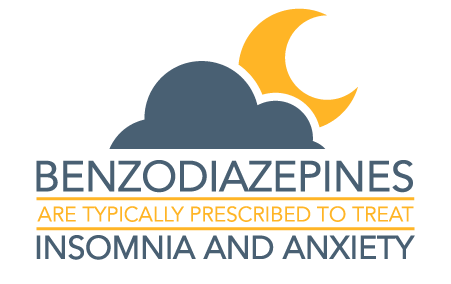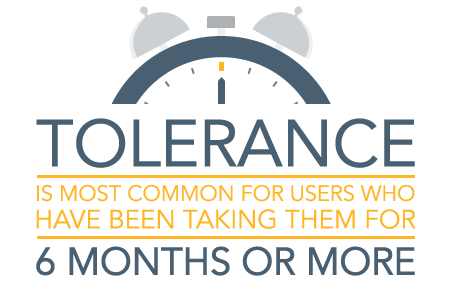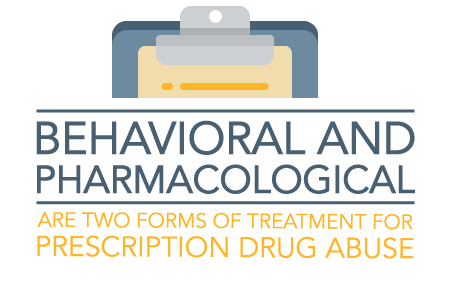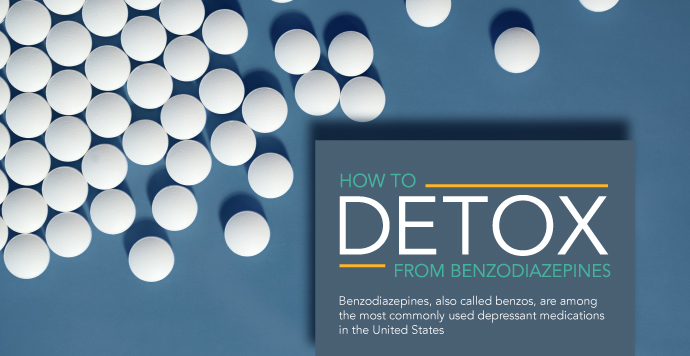Benzodiazepines Defined
Benzodiazepines, also called benzos, are among the most commonly used depressant medications in the United States, according to the Center for Substance Abuse Research (CESAR) at the University of Maryland. More than fifteen different types of benzodiazepines exist for the treatment of various physical and psychological afflictions. To be classified as a benzodiazepine, the medication must result in one or more of these effects:
- Anxiety relief
- Hypnotic
 Muscle relaxant
Muscle relaxant- Anticonvulsant
- Amnesiatic (or, a mild, memory-loss inducer)
Benzodiazepines contain highly sedative properties which make them a good target for abuse, in particular when combining them with other depressants, such as opiates and alcohol. Common benzodiazepines include:
- Xanax (alprazolam)
- Librium (chlordiazepoxide)
- Valium (diazepam)
- Ativan (lorazepam)
Finally, benzodiazepines can be used in many different ways, depending on the prescribed purpose of the drug, and are classified into two groups: short-acting and long-acting. The most common method of use is oral, both in capsule and tablet forms, and, with some benzodiazepines, intravenously, as found by CESAR. Benzodiazepines are typically prescribed to treat insomnia and anxiety, according to the Drug Enforcement Administration.
How Benzodiazepines Work In The Brain And Body
Benzodiazepines enhance the activity of gamma-aminobutyric acid (GABA), a neurotransmitter in the brain. While GABA generally slows down neuronal activity, the presence of benzodiazepines in the body further enhances this process, leading to the slowing of nerve movement in the body. The body’s nervous system has two types of receptors for benzodiazepines in the body. One type causes the anti-anxiety effect, and one produces the sedative effect. Short-acting benzodiazepines, as the classification suggests, are gone from the body in a short period of time, while long-acting benzodiazepines may take a long period of time to leave, or may even accumulate in the bloodstream.
Fighting Dependence And Tolerance
A tolerance to benzodiazepines is most common for users who have been taking them for 6 months or more. Unfortunately, some physicians fight tolerance by increasing the dosage of benzodiazepines for the user, or by adding another benzo to the prescription.

Users often develop a tolerance to the more mild effects of benzodiazepines, such as sedation and impairment of motor coordination. Further, the Center for Substance Abuse Research found users may experience cross tolerance between benzodiazepines and other depressants; in other words, while mixing the two depressants, users will not feel the effects of benzodiazepines as intended by the prescription.
How To Detox– Fighting Withdrawal
The first step in fighting withdrawal, as recommended by physicians, is to slowly decrease the amount of benzodiazepines a user takes. This must happen gradually, in order to avoid too much discomfort, as the most severe withdrawal symptoms usually occur when usage of a short-acting benzodiazepine is suddenly stopped. Also, the Drug Enforcement Administration warns that dependence on benzodiazepines may occur whether users take benzodiazepines as prescribed or use them illicitly. When attempting to stop using benzodiazepines, some withdrawal symptoms may include the following, as listed by the DEA:
- Anxiety
- Insomnia
- Dysphoria
- Tremors
- Seizures
To begin the withdrawal process, flumazenil may be administered to reverse the effects of benzodiazepines. Though withdrawal from benzodiazepines can be troublesome, it is rarely life-threatening and because of this, teaching the body to detox from benzodiazepines is possible. The first step is to speak with a physician about seeking treatment.
Seeking Treatment
There are two forms of treatment for prescription drug abuse (the category of abuse under which benzodiazepines is listed): behavioral treatment and pharmacological treatment, according to National Institute on Drug Abuse. Behavioral treatments focus on teaching users how to build a life to function without the drug, including:
- Dealing with cravings
 Avoiding drugs and situations that lead to drug use
Avoiding drugs and situations that lead to drug use- Handling a relapse
- Forms of behavioral treatments comprise the following, and may also help individuals to function better in their personal lives, in relationships, and at work:
- Individual counseling
- Group or family counseling
- Contingency management
- Cognitive behavioral therapy
While use of pharmacological treatment works for some prescription drug abuse, behavioral treatment is better suited for the abuse of benzodiazepines. Those addicted to benzodiazepines should be supervised medically for detoxification in order to gradually wean themselves, as it can be a lengthy and difficult road. In dealing with this process, individuals can and should seek inpatient and outpatient counseling.
Seeking The Help You Need
Perhaps you are reading this article today because you are struggling with benzodiazepines use, or maybe you have a loved one about whom you are worried. Maybe you are just seeking some answers for someone close to you and wondering where to turn next. You can find help and hope by contacting us today and taking the next step of the rest of your life with DrugRehab.org.
Sources
Center for Substance Abuse Research– Benzodiazepines
Drug Enforcement Administration– Benzodiazepines
National Institute on Drug Abuse– Prescription Drugs: Abuse and Addiciton (CNS Depressants)
National Institute on Drug Abuse– Prescription Drug Abuse: Treating Addiction to CNS Depressants
National Institute on Drug Abuse– Prescription Drug Abuse: Treating Prescription Drug Addiction


